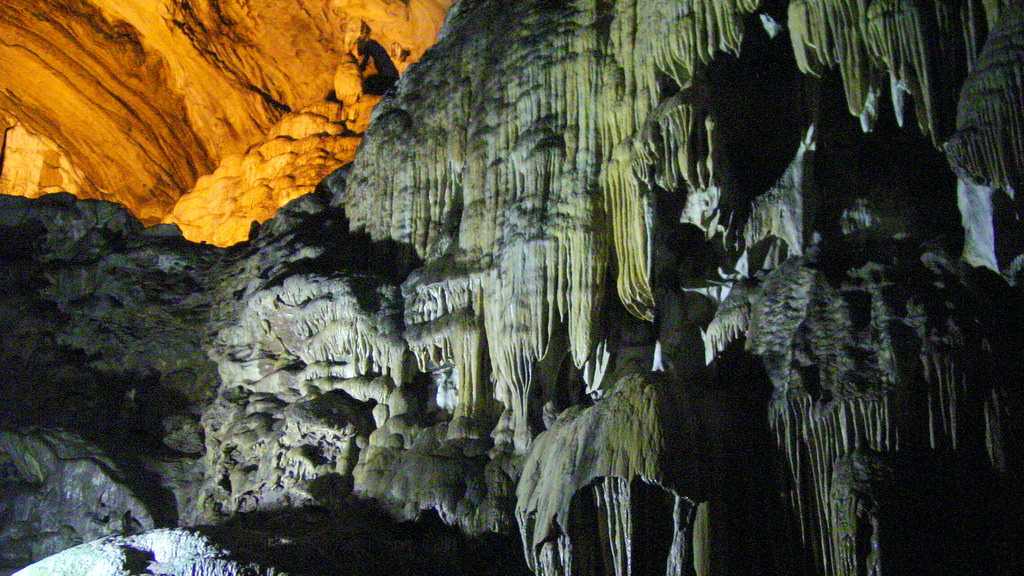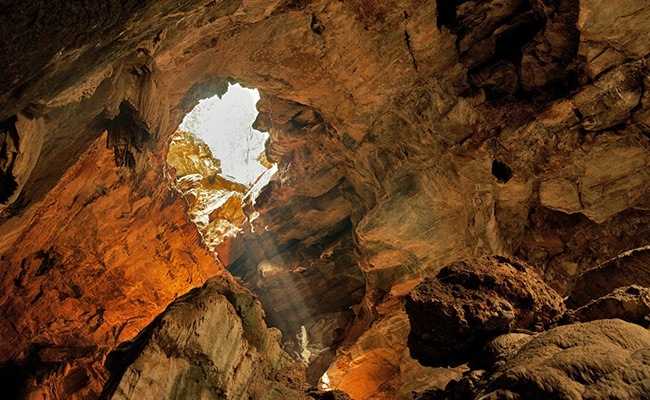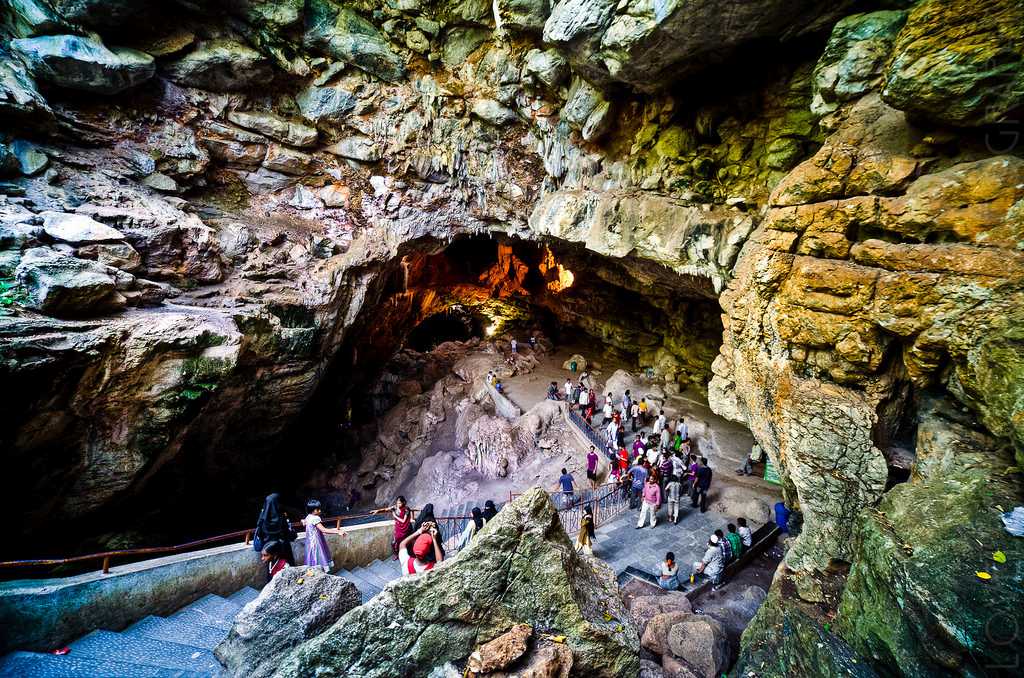Borra caves, Visakhapatnam Overview
Located on the east coast of India, the Borra Caves are situated in the Ananthagiri hills of the Araku Valley in Visakhapatnam district. Breath taking hilly terrain, beautiful landscape, semi-evergreen moist deciduous forests, and wild fauna of the Borra Caves are a visual feast.
A marvellous creation of nature, the Borra caves were formed when river waters flow through a limestone area, and the calcium carbonate turns into calcium bicarbonate, which is easily washed out by the running water. The most striking feature of the caves is its exquisite variety of speleothems ranging in size.
Borra Caves are deemed to be among the largest in the country and are perched at a whopping elevation of about 705 metres. They are basically karstic limestone structures extending to a depth of 80 m and are considered to be the deepest cave in India. The combination of sunlight and dark conjures amazing dancing shaped in the depths of the Borra Caves, which is a sight in itself.
Natural skylights in the caves make way for colourful imagery that imparts them a unique enigma of their own. Animal lovers will find bats as well as the golden geckos hiding in the shadows of the niches. The journey up to the primary destination with its picturesque location and a thrilling hike is a treat in itself. Visit this destination and explore the unique beauty of Araku Valley in all its glory.
The legend of Borra Caves is rich with narrations from tribal communities such as Jatapu, Porja, Kondadora, Nookadora and Valmiki, who inhabit the villages in the region. One such legend dictates that a cow dropped through a hole in the caves as it was grazing the nearby fields.
Soon enough, people came looking for it and discovered a stone in the caves which resembled a Shiva Lingam. The cow returned safe and sound and the well-being of the animal was attributed to the Lingam. A small temple was soon built around the caves and people flocked the area to seek the blessings of the Lord.
The history of Borra Caves is perhaps as old as the history of the Araku Valley itself. Believed to have been formed as a result of perennial water flows over millions of years, the caves were discovered by British geologist William King in the year 1807. The process of the formation of the Borra Caves is quite intriguing as well. Humic acid in the water reacts with the calcium carbonate in the limestone and dissolves the minerals breaking the rock gradually.
As a result of this, varied rocks and shapes are formed in the caves. The total length of the Borra Caves is about 200 meters and the Dandakaranya - Bolangir - Kibur train track passes over the caves. Anthropologists have also found stone tools of middle Paleolithic Age dating back to 30000 to 50000 years indicating human habitation in the Borra Caves.
The picturesque territory and thrilling terrain of Borra Caves is the perfect destination to pursue a little trekking adventure over the weekend. With the waters of Katika Waterfalls cascading nearby, the scenic beauty of this place is only second to the adrenaline rush that a hike here provides.
The trekking difficulty is easy to medium, so even beginners will not have a problem in navigating this destination. The journey up to the caves can take 3-4 hours, but the final view of Borra Caves is definitely worth all the hard work!




No comments:
Post a Comment